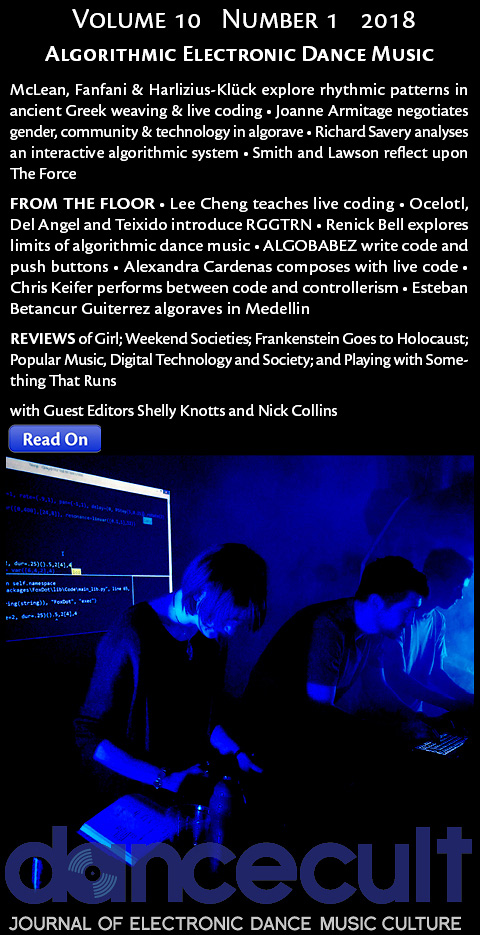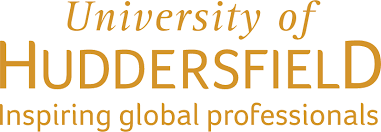Cyclic Patterns of Movement across Weaving, Epiplokē and Live Coding
Keywords:
Epiploke, Pattern, Live coding, Weaving, AlgoraveAbstract
This article hosts an interdisciplinary exploration of cyclic rhythmic structures, bringing together historical references to ground understanding of algorithmic electronic dance music, and in particular the algorave movement. The role of pattern in uniting dance, music and language is investigated in the ancient practice of weaving, in ancient Greek choral lyric, and contemporary live coding. In this context the TidalCycles environment is introduced, with some visual and audio examples. Cyclic metrical patterns in ancient Greek are then explored in detail, particularly the metrical transformations of Epiplokē. Finally, this jump between contemporary and ancient practice leads us to consider algorave itself as a Luddite movement, its proponents engaged in an unravelling of technology.
Downloads
Published
Issue
Section
License
Authors who publish with this journal agree to the following terms:- Authors retain copyright and grant the journal right of first publication with the work simultaneously licensed under a Creative Commons Attribution-Noncommercial-Share Alike License that allows others to share the work with an acknowledgement of the work's authorship and initial publication in this journal.
- Authors are able to enter into separate, additional contractual arrangements for the non-exclusive distribution of the journal's published version of the work (e.g. post it to an institutional repository or publish it in a book), with an acknowledgement of its initial publication in this journal. Such derivate works or subsequent publications must happen no less than one calendar year after the initial publication date in Dancecult.
- Authors are permitted and encouraged to post their work online (e.g. in institutional repositories or on their website) prior to and during the submission process, as it can lead to productive exchanges, as well as earlier and greater citation of published work (See The Effect of Open Access).






